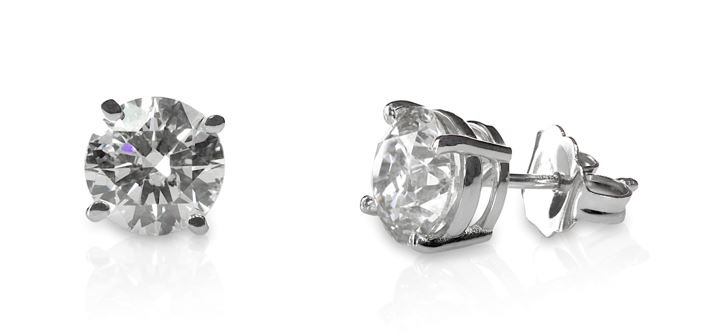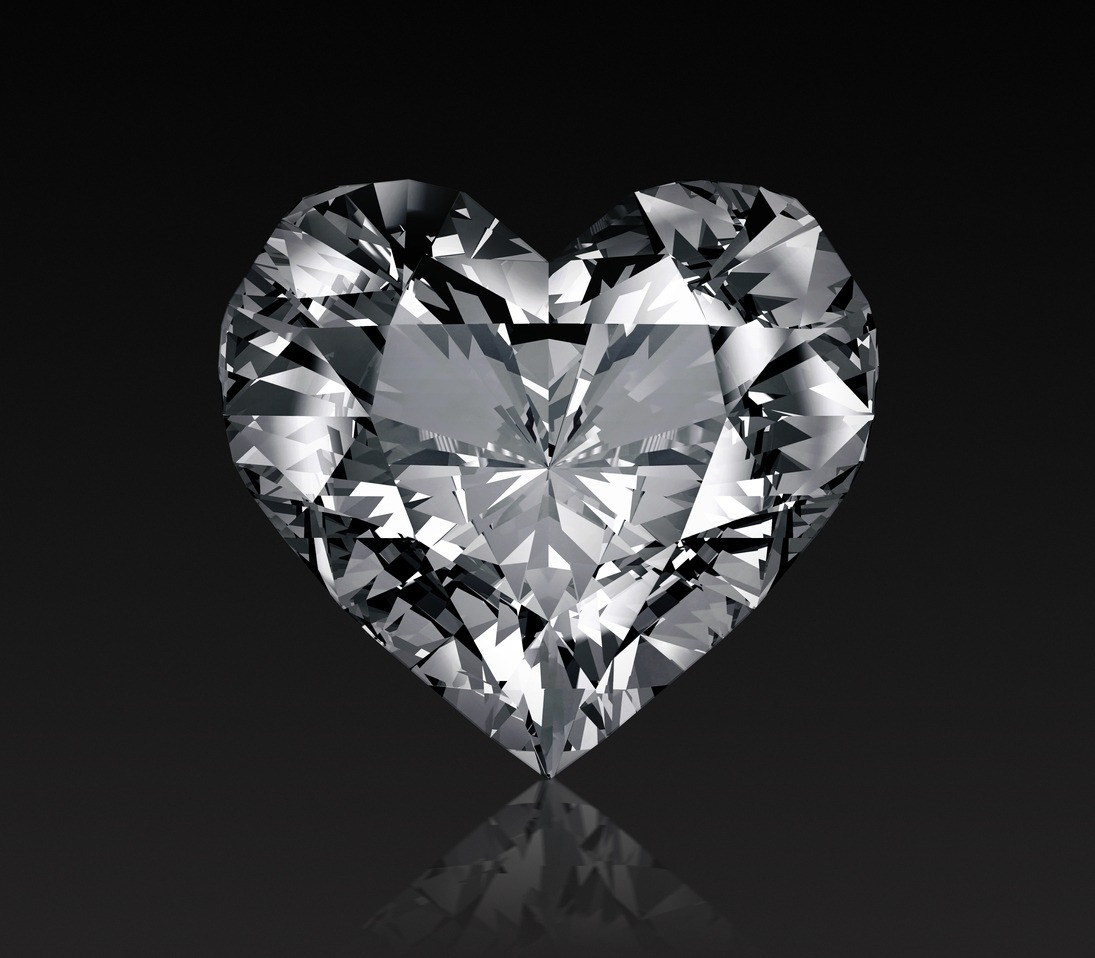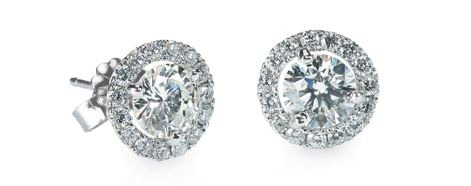The diamond stud earrings became a fashion trend in the late 19th century, and because they are both classic and versatile, they make a perfect gift even to yourself.
Although you may think choosing the perfect pair of diamond stud earrings is as simple as buying other jewelry from your local jeweler, it can be tricky. The style options are practically endless. It is hard to decide which diamond carat, color, size, shape, type of metal, the level of diamond quality, and setting style will suit you.
Whether trying to find the perfect diamond stud earrings for a loved one or yourself, here are the different styles of diamond stud earrings to help you consider before you make your final choice.
Diamond Stud Earring Shapes
As you may have heard, there are four primary criteria to check before buying a diamond. Commonly known as The Four C’s, it consists of the diamond carat, cut, color, and clarity.
Unless you buy a diamond for an engagement ring, it’s okay to skip clarity and color because they are less important than the cut.
Why is the shape of the diamond so important? Because it will affect other elements of the stud earrings you decide to buy, it’s crucial that you choose wisely.
Diamond Cuts for Studs
The cut of a diamond describes how well it has been shaped. There are different ways to cut diamonds to improve their brilliance and beauty. How well a diamond is cut is important because it determines its grade.
The official GIA grades for diamond cuts are Excellent, Very Good, Good, Fair, and Poor. Having a well-cut diamond is very important because a better cut can improve a diamond’s sparkle, while a lousy cut makes the diamond less radiant.
Different cut styles include brilliant princess and round cuts, cushion and oval, Asscher and emerald, and heart-shaped, pear-shaped, and marquise cuts.
Princess and round cuts are the most popular diamond shapes for stud earrings. They are known for their classic, equally proportioned look and offer maximum brilliance and sparkle. For an edgier style, the four-point metal basket of the princess cut diamond would be a good choice. If you want a traditional, the smooth and circular appearance of the round-cut diamond studs may be the best choice.
Cushion cut and oval-shaped have grown in popularity with younger groups because of their vintage vibe. They look great with any dress or outfit and offer a more feminine look.
Asscher and emerald-cut studs likewise give a vintage look but have more rigid edges and angled cuts. Because they are not symmetrical, the setting can be affected.
Heart-shaped, pear-shaped, and marquise cuts are usually set aside for the more daring and adventurous types of people because of their unique style.
With all those choices, you get to know your personality according to your choice and what settings you would be wearing your diamond stud earrings.
Diamond Quality
The most crucial factor to consider when investing in a pair of diamond stud earrings is the quality. It is universally determined with the use of the 4Cs.
Here’s something to help you get the best value:
- Color – The color of a diamond is a way of grading the whiteness of a white diamond. They are graded on a scale from D to Z, with D being the most colorless and Z being the most “yellow” grade of white diamond. When considering diamond color, you’ll want it to be colorless.
- Clarity: Clarity measures the extent of blemishes and imperfections inside a diamond. Blemishes and imperfections make a diamond look cloudy and less sparkly, making it look less beautiful. The diamond’s clarity is measured using magnifications and given one of the following grades: FL for Flawless, IF for Internally Flawless, VVs1 or VVs2 for Very, Very Slightly Included, VS1 or VS2 for Very Slightly Included, SI1 or SI2 for Slightly Included, I1 or I2 or I3 for Included.
- Cut – f you want a more classic cut like a round or princess-cut diamond, you’ll want to choose a stone with a ‘very good to ‘excellent’ GIA rating. After all, the idea of investing in diamond stud earrings is for them to shine and sparkle brilliantly.
- Carat – is the weight of the diamond that tells you the size of the diamond. It also determines how much you want to spend on your diamond stud earrings.
One of the most popular and affordable sizes is one-carat diamond studs, the total weight of one pair of earrings, with a half-carat in each setting. To better understand how big that is, a single half-carat diamond stud is about 5 millimeters in diameter, and a one-carat diamond is around 6.5 millimeters in diameter. Remember that the larger the diamond, the heavier it will be. If you want to have a higher carat count on your diamond stud earrings, consider that it will weigh on your earlobes and protrude more, so choose a setting with an appealing profile if you want a larger carat diamond.
So, every diamond you can buy will have a description. To summarize: the diamond-cut measures the cut quality, carat describes the diamond size and weight, and color and clarity describe the brilliance of the diamond. Think about what’s important to you when weighing which diamonds will work best for you.
Diamond Stud Setting
The setting of your diamond stud earrings will depend on the style, shape, and cut of stone you choose.
- Bezel Setting – The bezel setting was one of the earliest gemstone settings. Bezel settings securely hold the stone in place and allow showcasing a precious metal of choice like rose gold, yellow gold, or platinum. This setting creates a metal perimeter that completely encloses the diamond stud, giving it a more modern and uniform look.
- Halo Setting – Halo settings are popular in-ring and diamond stud earring settings. A ring of smaller diamonds is around the center gemstone forming a halo adding brilliance to the center diamond as it reflects the smaller halo stones.
- Four-Prong Setting – A four-prong diamond setting offers elegance and a timeless appeal. It uses less metal encasing the diamond, allowing the stone to pop and giving your diamond a more squared-off look. It is the perfect setting for princess-cut and cushion-cut diamonds. You can go for a six-prong setting if you want a sturdier setting for a larger stone.
- Three-Prong Martini Setting – As the name suggests, martini settings resemble the shape of a martini glass and allow the diamond closer to your earlobe. This type of setting is constructed to fit the diamond perfectly, true to its size, to create a flush setting.
Best Diamond Earring Back
Choosing the back for your diamond earring is as essential as choosing the style of your diamond because it is what secures your diamond while you are when wearing it. Choosing the proper backing for your diamond earrings will come down to preference.
- Friction, Push-Back, or Butterfly Earring Back
Push-back earring backings are the most common stud earring closures. They are also called butterfly backs or friction backing. They are popular because they are simple to take on and off and secure.
- Threaded or Screw Back: Screw-on earring backs are the most secure of stud earring backings. While thicker in diameter, they keep your stud earrings securely in place and prevent them from falling out. However, if you have sensitive earlobes, this may not be a good choice. It is difficult to remove, so taking off your earring can be challenging if you are not used to them.





